The Art Deco First United Building, alternatively known as the Perez–Samanillo Building, was built in 1928 and was the tallest building in Manila during its completion. Designed by Andrés P. Luna (the son of renowned painter Juan Luna), Juan Nakpil de Jesus was the civil engineer and Jose G. Cortes was responsible for its construction.
That same year, the building won the Best Décor Award. The building was built for Spanish businessman Luis Perez Samanillo (related to the owners of Hotel de Oriente in Binondo, he was killed during the Spanish Civil War) at the time when Escolta was considered a financial center.
In February 1928, the Erlanger & Galinger, and Hale Shoe Company moved in to the building, followed by leather goods store Riu Hermanos. In 1936, Berg’s Department Store, Manila’s premiere department store and a main landmark in Escolta , set up shop on the building’s ground floor. In 1933, the building hosted the consulates of France (Room 329) and Panama (Room 217).
Following the aftermath of World War II, the building was left significantly damaged but was later repaired. In 1951, self-made Chinese businessman Sy Liang Teng of the Syliangten family bought Berg’s Department Store from its original American owner, Ernest Berg. It closed sometime in 1982 and Fairmart took over. Ideal Home Houseware Center also occupied the ground floor until 2004. In 2012, East West Bank occupies the eastern corner of the building.
Around 1964, the Perez–Samanillo Building was put on sale and, in 1968, was bought by José Cojuangco (the late Pres. Corazon C. Aquino‘s father), owner of United Bank a tenant of the building, who held the building for 11 years. In 1979, the parts of the building were acquired by Danding Cojuangco (half of the ground floor and the whole second floor) and the Syliangteng family (half of the ground floor where Berg’s was located and the 3rd, 4th and 5th floors). The Tanco family also bought a piece of the building from Cocobank.
In the 1970s to the 1980s, due to its proximity to the movie theaters of Avenida Rizal, the building hosted various film production studios:
- RVQ Productions of comedian Dolphy in Room 514, from 1974 to 2008 and the smaller Room 310-B from 2008 to 2012
- Nora Villamor (NV) Productions of actress and producer Nora Aunor, in Rooms 502 and 506, from 1973 to 1985
- GC Films, associated with Rolando and Gabby Concepcion, from February 1982 to July 1984 in Room 308.
- Essex Films of Danny Zialcita occupied Room 323 from April 1984 to May 1986, Room 315 from August 1986 to December 1988 and Room 317 from September 1983 to December 1988.
- LL Productions of Lito Lapid held office at Room 321 from February 1984 to May 1989.
- Solar Films occupied Rooms 306, 310 and 312 from March 2001 to May 2004.
The Syliangtengs made a conscious effort to maintain the building through an “adaptive reuse” approach. On May 16, 2015, the modest First United Building Community Museum was opened to reflect the colorful history of Escolta through the story of the First United Building and of patriarch Sy Lian Teng, an entrepreneur who ran Escolta’s (and Manila’s as well) premiere department store, Berg’s.
Check out “First United Building Community Museum”
Aside from being one of Manila’s finest pieces of surviving pre-World War II Art Deco architecture, the building is also a centerpiece of the Escolta Street Revival movement. On May 26, 2016, the space once occupied by Berg’s was converted into a bazaar and exhibition space for young creative artists called Hub: Make Lab, an incubator for creative startups, artists and makers in the community. The booths feature a variety of sellers, with items ranging from notebooks to knickknacks.
A series of local shops for arts and vintage goods, these cluster of exhibition booths, under a hanging sculpture of Leeroy New, were designed by architect Arts Serrano. Also found here are Folk Barbershop; Fred’s Revolucion Pub (an artist-run bar) and Den’s Coffee Shop and Contemporary Culture.
In 2017, the First Coworking Community, an open space for people looking for an environment where they can create new ideas and develop meaningful connections with other passionate creatives, was opened. During the COVID-19 pandemic in 2020, their operations were disrupted but all have since resumed operations. On October 16, 2018, the building was declared as a Heritage Structure by the National Historical Commission of the Philippines.
The five-storey First United Building has a rectangular plan. The main facade of the building has a central tower, containing the graceful main entrance (with filigreed wrought iron doors) of the building below, flanked by two chamfered corner towers on both ends. Ornamental treatments of the three towers feature thin cylindrical moldings running up to the square plates and continued by beveled arches that relate to the windows at the sixth floor.
Stout finials, above the arches, flank the octagonal window. A pergola, with protruding rafters originating from the girder, connected the bevels. The central tower has a rigid arch and is capped by elongated octagons that bordered a display. Geometric patterns on the lamps of the building are dominated by boomerang-like chevrons layered with spirals and lancet arches.
The parapet on the topmost part has floral arrangement on an urn with equally distant low-relief medallions. The main entrance leads to the elevator and the stairwell. To open up the intersection, the side towers were both cut in the corners.
First United Building: 413 Escolta Street, Binondo, Manila. Tel: (632) 7744 5148 and (632) 7241-5150. E-mail: firstunitedbuilding@gmail.com. Coordinates: 14.5987°N 120.9794°E.


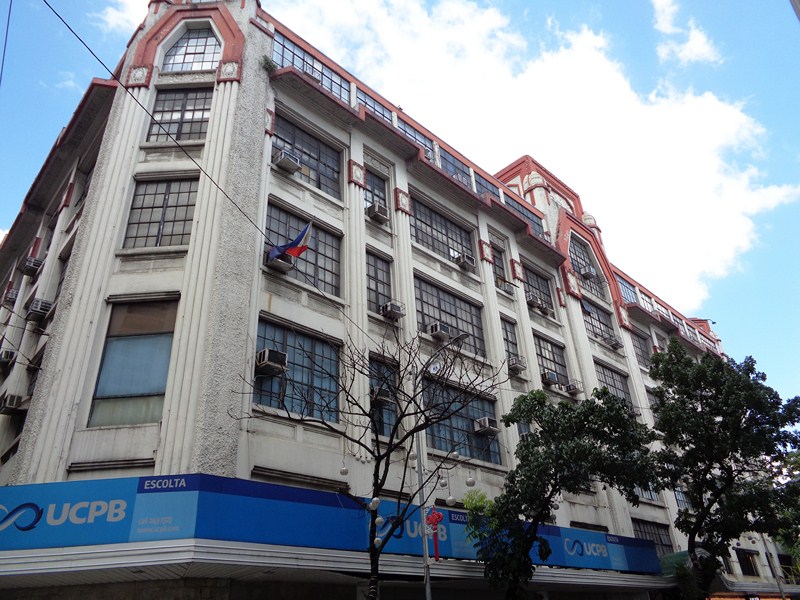
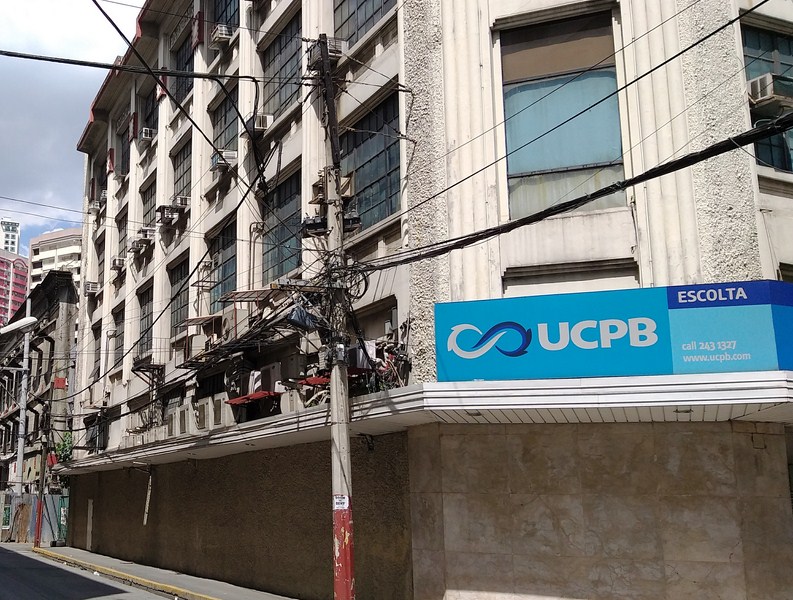
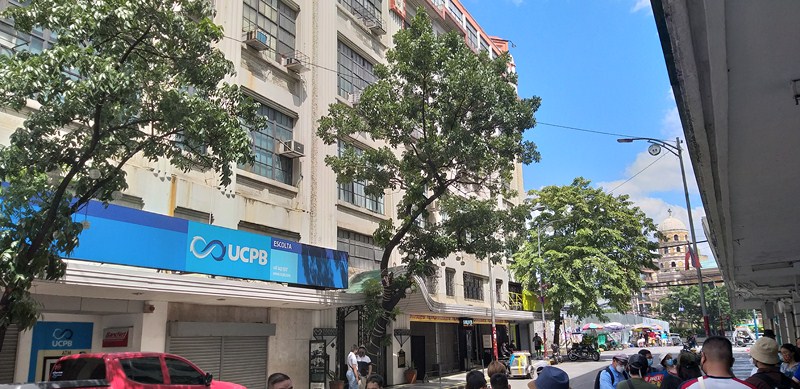


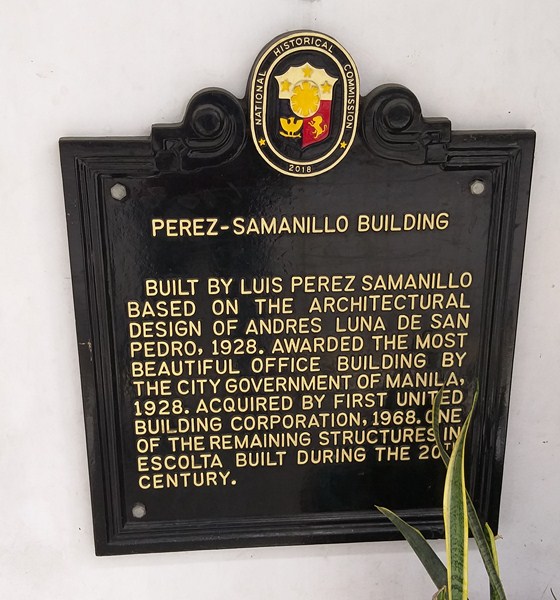
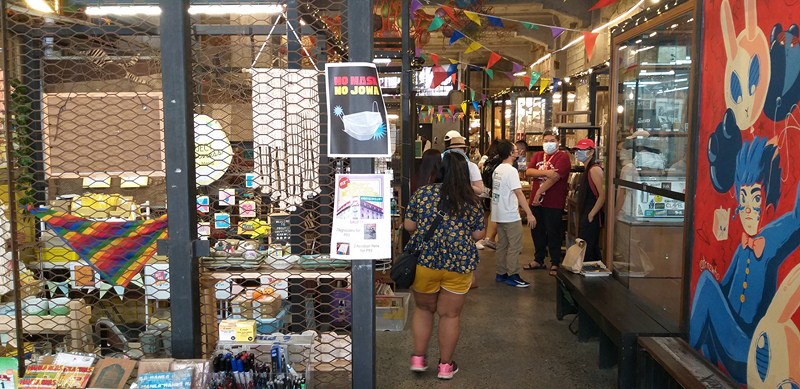
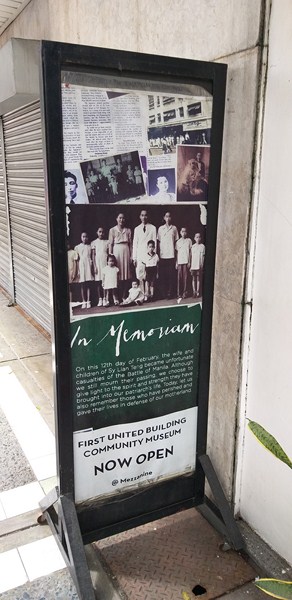
To the benjielayug.com webmaster, Thanks for the comprehensive post!